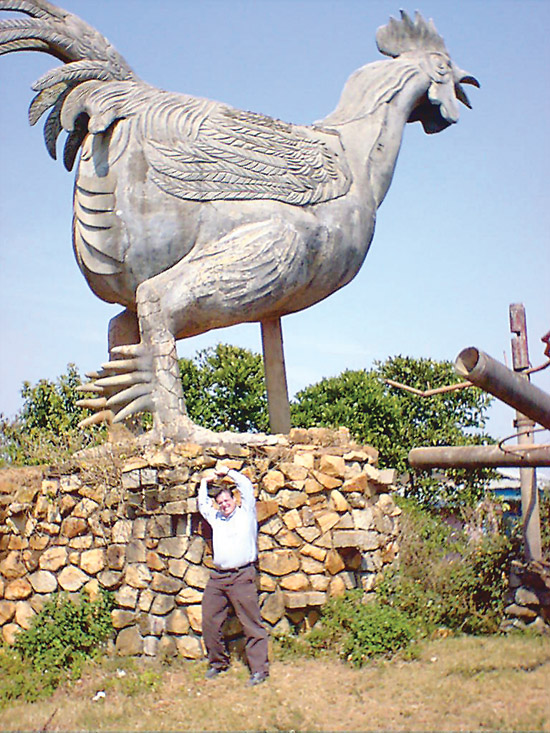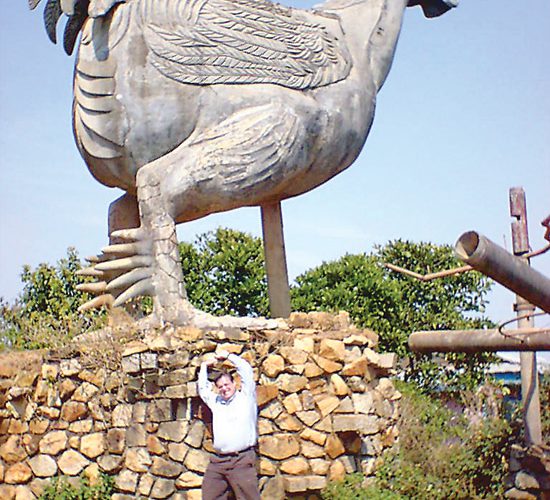(No.9, Vol.2, Sep 2012 Vietnam Heritage Magazine)
Where should we go on vacation?’ Dalat is the traditional answer for residents of Saigon and other southern cities, the one that still comes to mind first. This is a city of flowers, lakes, and waterfalls, as well as an escape from urban heat.
‘When Saigon people take a short vacation, they go to Vung Tau,’ said Ngoc, a second-year student at the University of Economics Ho Chi Minh City. ‘When they want to take a longer trip, they go to Dalat.’ Ngoc herself has been to Dalat four times.
Dalat is the most accessible city in the Central Highlands. At 1,500 m above sea level, the climate is dramatically cooler than it is on the coast. The average daily temperature for May is 17°C to 26°C, compared to 25°C to 34°C for Saigon. The month has an average of 18 days of rain, the same as for Saigon.
The city is famed for its flowers, so don’t miss the Dalat Flower Garden next to Xuan Huong Lake. This lake is 5 km across and is located near the centre of town. The Dalat wild rose gives the city a sweet smell of its own. In winter, the marigold trees blossom.
‘Dalat is very beautiful,’ added Linh, another economics student. ‘I like flowers. I have many pictures at the flower festival in Dalat.’
When the governor of French Indochina asked the famed physician Alexandre Yersin to recommend a location for a health spa, Yersin answered ‘Dalat.’ At that time, hill tribes dominated this area. One such tribe is the Lat, and ‘Da Lat’ translates as ‘stream of the Lat.’ Medical opinion at the time associated tropical climate with diseases like malaria. The new city, founded in 1912, would be a healthy environment, a place of refuge where the ill could recover.
A dam built in 1919 created a small lake, and this was enlarged in the 1930s. The surrounding highland wilderness was a hunter’s paradise, filled with tiger, elephant and rhino. The city was a favourite of Bao Dai, Vietnam’s last emperor, whose three palaces are now tourist attractions. Dalat Tower, on top of the main post office, is a replica of the Eiffel Tower. Nowadays, Dalat is for honeymooners.
‘When I get married, I will go to Dalat,’ said Linh. ‘It is very romantic.’
An outstanding attraction is Prenn Falls, located about 10 km from the city. This is where the honeymooners get their pictures taken dressed up as tribesmen or riding horses. There are many other waterfalls in the area, the largest of which is Pongour, located 34 km south of the city.

One thing Dalat doesn’t lack is touristy nicknames: Petite Paris (little Paris), City of Flowers, City of Love, and City of Thousands of Pine Trees. In an article published in 1937, French author André Morval created a Latin motto: Dat Aliis Laetitiam Aliis Temperiem (Pleasure to some, freshness to others). The initials of this clever word puzzle spell out the city’s name.
The Valley of Love is a park that caters to the honeymooners. There are ‘love statues,’ horse rides, boat rides, and photography stands. On Valentine’s Day, the park has a kissing competition in which couples kiss for as long as they can. Vietnamese-style love is not for everyone; Westerners find it more tacky than romantic. It exhibits the ‘love of the unnatural; of artifice and exaggeration,’ as Susan Sontag defined ‘camp’. But the park is still a must see, if only as a cultural artefact.
After visiting the Valley of Love, Vietnamese visitors typically go to the market in the centre of town and load up on produce. Jam, coffee, tea, local wine, and dried venison are considered excellent gifts.
Hang Nga Crazy House, built in 1992, is another stop on the Dalat love express. ‘Hang Nga’ translates as ‘moon sister.’ The expressionist architecture, inspired by Spanish architect Antoni GaudÃ, avoids straight lines and makes the building look a bit like a giant tree. As a house for lovers, it is full of mirrors.
It was designed and built by Dang Viet Nga, the daughter of former President Truong Chinh. Modern architecture didn’t go down well with the city fathers, and they attempted have it torn down 1993. Nga went over the heads of the local authorities and pleaded her case with her father’s old friends in Hanoi. The building is now one of Dalat’s top attractions.
Although you can’t take the train to Dalat, it does have a train station. The train is an old-fashioned steam engine you can ride for 7 km to Linh Phuong pagoda. Built in the 1930s, it once connected Dalat to main North-South line at Thap Cham. The rack railroad through the mountains was considered quite an engineering feat in its day, the pride of French Indochina.
Another ride with a view is the cable car. This lifts you high over Quang Trung Reservoir and gives you a spectacular view.
‘When I take the cable car, I have a lot of time to chat with my parents or my boyfriend,’ Linh said.
Guided treks of the countryside and of tribal villages are popular. Lat Village has a large statue of a chicken. Ask your guide why. They are all eager to tell the story, and several explanations exist.
Many hill women do embroidery using a special loom worked with both hands and feet. The first time I went to Dalat, I met a hill tribe girl. ‘If you want to marry me, come back with ten buffalo,’ she said. I went back to meet her several times, but I never brought any buffalo.
Dalat is seven hours by bus from Saigon, five from Nha Trang. From Saigon you can use Mai Linh Express, 201 Pham Ngu Lao, or Phuong Trang, 272 De Tham. The fare is about VND100,000. There is an airport as well, with daily flights from both Saigon and Hanoi. The city has hotels everywhere and there’s no need for air conditioning. Ten dollars a night is a typical. If you can afford $100 (VND2,100,000) to $230 (VND4,830,000) a night, you can live in an authentic colonial villa at the award-winning Ana Mandara Villas.

Dalat,2005. Photo: Minh Loc

Xuan Huong lake, Dalat, 2005. Photo: Minh Loc

